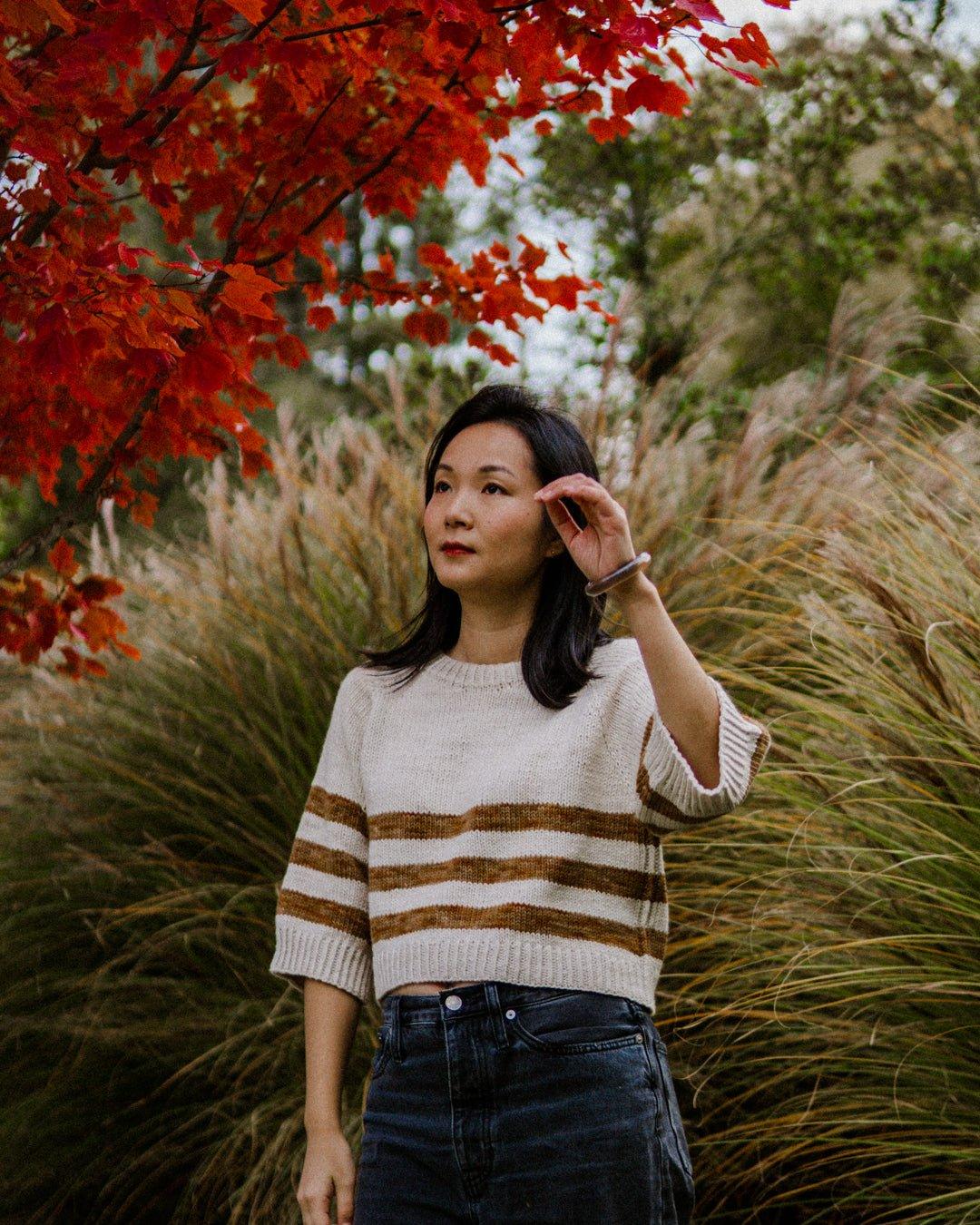3 changes to make for more inclusive test knits
I’ve talked previously about designer pay, and how designers need to be paid more for there to be a chance for marginalized folks to enter and stay in the industry. This remains true in 2022, and I still believe that designer pay is too low across the board no matter who the designer is. Inclusive test knitting is still a conversation that we have to have, however.
However, the devaluing of the labor associated with the knitting craft doesn’t just exist in designer pay. It’s in every part of the production process for pattern creation. I think it's really important that we hold this in tension with what I'm about to say. We can multitask and think about test knits while at the same time acknowledging that designers are underpaid.

Today I want to talk a little more about what I’d like to see from my fellow designers to make the test knitting process less exploitative and more inclusive.
When we run test knits, the knitters who sign up are working for us as volunteers, putting in many, many hours in exchange for maybe a couple of free patterns, in most cases. We are asking for a huge amount of time input, for very little in return.
Before I was a designer, I was a frequent test knitter for a year. And now that I've been a designer for a little more than a year and have made it my full time job, relying on it for my income and everything. I feel ready to talk about the things I've learned by having been on both sides of this table.
When I was a test knitter, I loved being part of the experience, being able to share FO's with everyone else. It felt like a little knit-along, and that remains true. There are a lot of positive things about test knitting.
However, there are still things that we can do to improve the experience for our knitters and make sure everyone can participate if they want to.
Here are three changes I've made to my testing more inclusive that's possible within my budget:
Longer Test Period for Inclusive Test Knitting
This one is the one that immediately comes to mind when someone asks me how they can run tests more equitably. 5-6 weeks is not enough for a garment with sleeves. I know, I know, they’re the industry norm, but it’s just not good enough.
There are a lot of good reasons for having a longer test period. It’s more size inclusive, since shorter test timelines are amplified in larger sizes (more yards required per week compared to smaller sizes). The testing timeline should be based on the largest sizes, not the smaller sample sizes typically used in the pattern design process. I don't think I can call myself a size-inclusive designer if I'm not running size-inclusive tests because the test periods are too short.
There’s also disability inclusion, because people with repetitive stress injuries, mobility issues, and mental health conditions might need that extra buffer time to finish.
And finally, a longer test period is more class-inclusive because people who work long hours or multiple jobs are more likely to be able participate if the test period is much longer.
I typically give 10 weeks on all my DK or heavier weight garments, more if I can afford to, and 12 weeks for any smaller gauge garments.
I’m an extraordinarily slow knitter myself due to chronic pain and ADHD, and I would not be able to finish my own patterns in the largest sizes if I was given any less time than that, so I'm truly speaking from experience here!
Yarn support, where possible
I would like to see yarn companies and designers work together to provide yarn support, whether full or partial, to test knitters. I try my best to have a few spots of financial aid available, especially in the largest sizes for every single test. This is because higher sized test knitters have the largest burden cost wise. I’ve successfully worked with many yarn companies to provide a discount. Along with the discount I provide a small stipend to cover at least 50% of the yarn’s retail cost for knitters who have applied for financial aid.
This makes test knitting more financially accessible to all. I’ve had so many really lovely, super helpful test knitters who have told me they couldn’t have afforded to test without the financial aid. Everybody wins if we can make this happen.
While test knitting is a volunteering role, I really believe that we need to move towards some form of compensation. To me, the ideal would be full yarn support to all those who want to knit it with purchased yarn and not something they already own. And, I am actively working to move my business in that direction as my business grows.
Financial aid for yarn for tests is now a permanent part of my business budget for every pattern’s product development.
This one is probably the hardest one for designers to consider. Many of us (including myself) are working on shoestring budgets and do not sell enough copies to recoup our costs. However, I’m still going to put this down here because I really think that our industry is long overdue for better compensation for testers.
I know that not every designer will be able to do this, and I don’t judge anyone (especially those with marginalized identities) for not being able to do this. However, I would like to see yarn companies step up to fill the gap since the cost is so much lower for them to produce the yarn support needed. I’ve worked with a few yarn companies that have been willing to provide full yarn support for my upper size testers. I’m grateful for that and hope to see other companies follow suit.
(You can provide yarn support by donating to my Ko-fi fund here. Just add a note that it’s for yarn support and I can add that to my budget.)
Are we testing or are we marketing?
This is a sticky one, because we all need to be able to demonstrate our proficiency in the grade and show that it works in all sizes. But, I’m starting to think that photo requirements to participate in a test are kinda shitty.
Here’s the thing. Are we running a test knit or a preview knit? Because those are very different things.
I’ve participated in ‘tests’ that were really more of a marketing preview knit, and the designer didn’t respond to feedback in any meaningful way. Sometimes this works out because the pattern was basically flawless, and sometimes it’s a hot mess.
When the difference between test knitting for quality control vs marketing is unclear, testers also don’t know if they are safe to submit feedback. Or, are they’re just expected to churn out FOs, take beautiful pictures, and fudge any unclear parts in the pattern.
To be clear, I want my tests to be places where we make the pattern as good as it can be prior to launch. Any photos given are just a bonus, and not at all required.
When we are requiring photos to share on our own platforms for marketing, we are excluding a lot of knitters. These knitters might not feel comfortable sharing their bodies or faces shown on our accounts.
I don't think there's a 'right' way to do this part, but after thinking long and hard about it I've decided stop requiring public-facing photos. As long as I can see a fit photo in Slack, it's all good. And of course, plenty of test knitters are still happy to share their photos with me for marketing purposes which is a kind and lovely bonus.
Look… inclusive test knitting is just one step of many that designers have to manage.
It can be a lot to add all these items to our list of considerations when we are running a test. But on the other side of the table, testers are increasingly being asked to do far too much. Yes, there are non-compensatory things that they receive in return, such as direct pattern support, often a super fun group chat to participate in, and the chance to be the first to knit what might be the next hot pattern.
Still, as the standard size range expands to be more inclusive (a great thing!), testers are being asked to knit increasingly complex and larger projects in short period. Our industry must start to think more critically about how we can create a better environment to have more inclusive test knitting. And possibly, even provide financial support for the yarn at minimum.
What do you think? If you are a pattern tester, please feel free to drop in the comments what you’d like to see change in our industry. I want to hear from you!
This blog is supported by my Ko-fi monthly subscribers. If you found this post helpful, you can support me in this work by joining my monthly subscription or donate one time at my Ko-fi page:




Leave a comment
This site is protected by reCAPTCHA and the Google Privacy Policy and Terms of Service apply.